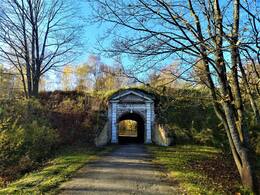Why the Olympic Games were not held in Latvia...or submarine repairs in Daugavgrīva, at the Baltic Navy repair shop
When Moscow was preparing for the Summer Olympics in 1980, the question was where to hold the sailing competition? It turns out that the choice initially fell on Riga, because there are ideal conditions for sailing in the Gulf of Riga and the city is also old and beautiful, it will not be ashamed. However, some Riga residents still remember or the younger generation has read on the Internet that Riga "supposedly.. refused this high honor and therefore the organization of the competition was moved to Pirita, a suburb of Tallinn. The Estonians received huge funding and built themselves a new and modern complex for sailing and recreation, which after the end of the Olympics, not a single Latvian went to admire... But now one interesting nuance has been revealed - it has become known why Riga refused this honor...
Even in Soviet times, the bureaucracy apparently worked quite slowly, because the apparatus was quite huge and cumbersome. While this issue was being coordinated, someone had already figured out that a new and modern highway should be built for the Olympics, which would connect Pārdaugava with Bolderāja and Daugavgrīva... A new four-lane highway was planned and its construction had even begun. If we now drive from Pārdaugava in the direction of Daugavgrīva, then from about the place where the runway of the former Spilve airport can still be seen on the left side of the current highway, on the left side of the road we can actually still see a leveled surface about one kilometer long, which makes the road seem double-wide. Apparently, this flat, now overgrown with grass and bushes, and in places even small trees, leveled roadside was the started but not built motorway... Now its remains can be seen almost to the turnoff to Kremeri. But - why did everything really stop and the sailing was moved to Estonia?
The project and plan were slowed down and stopped by the military. Bolderāja was home to a Baltic Navy repair shop, where, as it turned out in the late 1980s, not only Soviet submarines were repaired, but also Iraqi ones, because Saddam Hussein was still a friend of the USSR at that time. Libyan sailors were also trained at the training base in Bolderāja. Also nearby was Mangaļsala, where special antenna equipment was located, with the help of which NATO aircraft conversations over the Baltic Sea were listened to. Perhaps there was something else nearby that the Russian military did not want to advertise. Let us remember that in those days foreign yachts simply could not sail to Latvia, because they would not be able to pass through the Irbe Strait. Apparently, the Russian military did not want to reveal their secrets hidden in Bolderāja and the Daugava estuary area. Another interesting fact – before the war, in the Winter Port, in the same place where submarines of foreign countries – friendly regimes of the USSR – were being repaired in the 1980s, during the times of the Free State of Latvia, the Bolderāja shipyard JSC Vairogs was located. The decision to hand it over to the People’s Commissariat of the USSR Navy was signed in September 1940 by none other than Vilis Lācis, the Chairman of the Council of People’s Commissars of the Latvian SSR. Of course, this did not happen on his own initiative, but on the basis of a decision by the relevant competent authorities of the USSR at that time.
Nikolajs Vladimirovs, director of the airport "Spilve", A.Pope, Riga's main suburb, Riga, Golden Grain, 2005.
Related objects
Daugavgrīva Fortress
Daugavgrīva Fortress (entry from Birzes street) is located on the Daugavgrīva Island where Buļļupe river joins the Daugava river. The fortress was built in the 17th century to defend from enemies moving in the direction of Riga, which was an important administrative, trade and production centre. Later it became the main fortification of the Latvian Army coastal defence with several support points. This defensive fortification system is one of the most valuable objects of Latvia's military heritage. This fortress has witnessed Latvian military history. For example, during the Crimean War (1853-1856) Latvian and Estonian gunboat crews were trained here. The main objective of these units was to protect local ports and the coast from attacks by the British navy. During World War I Daugavgrīva militiamen companies were formed here. These were the first Latvian combat units, which came even before the Latvian Riflemen. Nowadays it is possible to see the territory of the fortress. ‘Komētforts’ and the Seaside Nature Park are located nearby and Mangaļsala fortifications are on the other side of the Daugava river.





